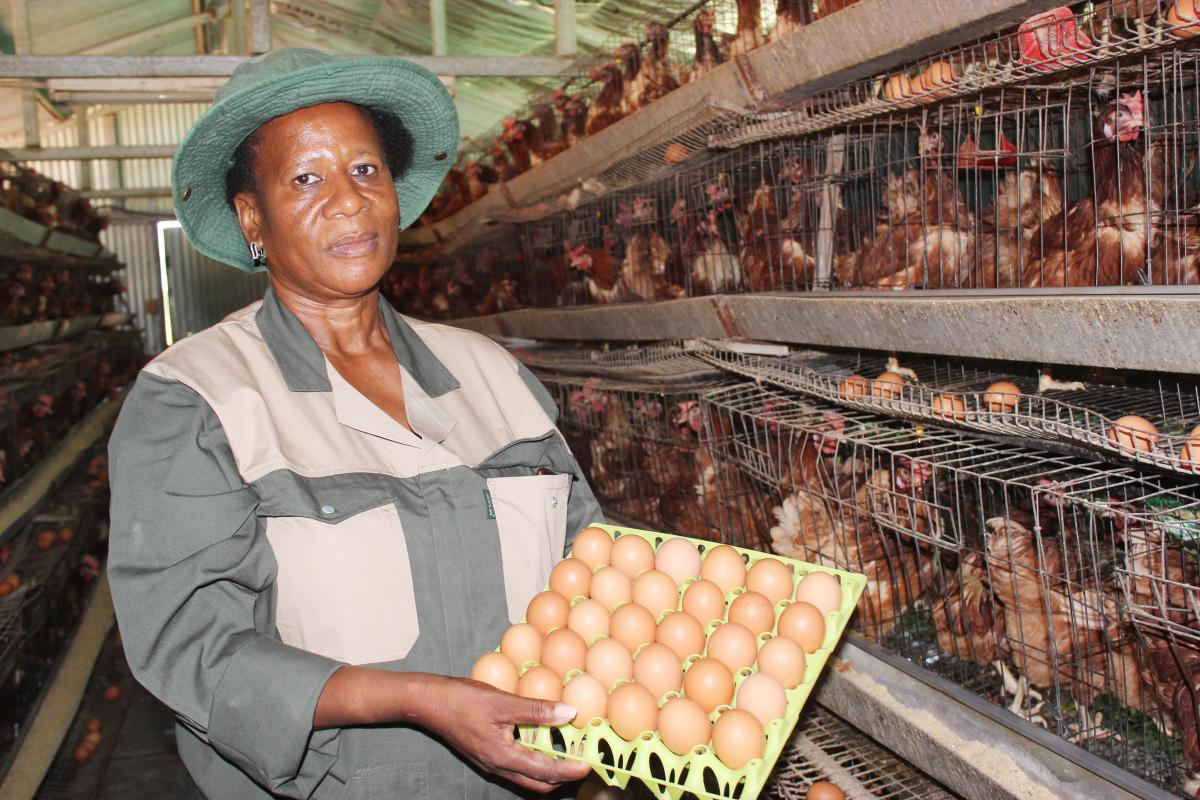A Winterveldt poultry farm is benefitting from government’s plans to make poultry a leading industry in the country.
 The Segometse Bagoshi Agricultural Project received 800 50-kilogram bags of laying mash from the Gauteng Department of Agriculture and Rural Development.
The Segometse Bagoshi Agricultural Project received 800 50-kilogram bags of laying mash from the Gauteng Department of Agriculture and Rural Development.
"Totalling 24 tons, the mash will feed 13 000 fully grown layer chickens," said Maggie Mokgosho (52), one of the farm’s owners.
The mixed farming project has an additional 15 000 layer chickens that are yet to produce eggs as well 134 cows, 88 sheep and 97 goats on a 10 hectare farm.
“The chickens we have at the farm produce between 8 300 and 8 700 eggs daily. Our eggs are mostly large and jumbo sized.”
The eggs are sold to local wholesalers, old age homes and shelters for the homeless, among others. Mokgosho co-owns the co-operative with her daughter Jessica (28), nephew Kagiso Somo (28) and sisters Mavis Phiri (61) and Eunice Monare (56).
Six permanent staff members have been employed and during busy periods, 12 temporary workers are sourced from the local community.
Segometse Bagoshi also offers practical experience to people studying agricultural courses at higher education institutions. At the moment, 15 students from Umfolozi TVET College in KwaZulu-Natal are being trained at the farm.
Poultry Master Plan
Supporting the poultry industry is one of government’s priority areas. At the second Investment Conference last year, President Cyril Ramaphosa signed the Poultry Sector Master Plan, which was developed by government working with industry players in the sector.
It seeks to address challenges, including cheap chicken imports, and help ensure that locally produced poultry products eventually gain a bigger market share.
The plan involves expanding the industry by increasing capacity at all stages of the poultry sector value chain. This will, in turn, increase the fixed investments, employment and the value of the sector’s output.
Targets set include;
- poultry products increasing by 10 percent within three years;
- the demand for poultry feed increasing by 300 000 tons per year and 50 new contract commercial farms being established within three years.
Government and the poultry sector have agreed to work together to revamp the certification systems so that South Africa’s chickens are able to meet the requirements of major poultry importing countries.



 Facebook
Facebook Twitter
Twitter WhatsApp
WhatsApp